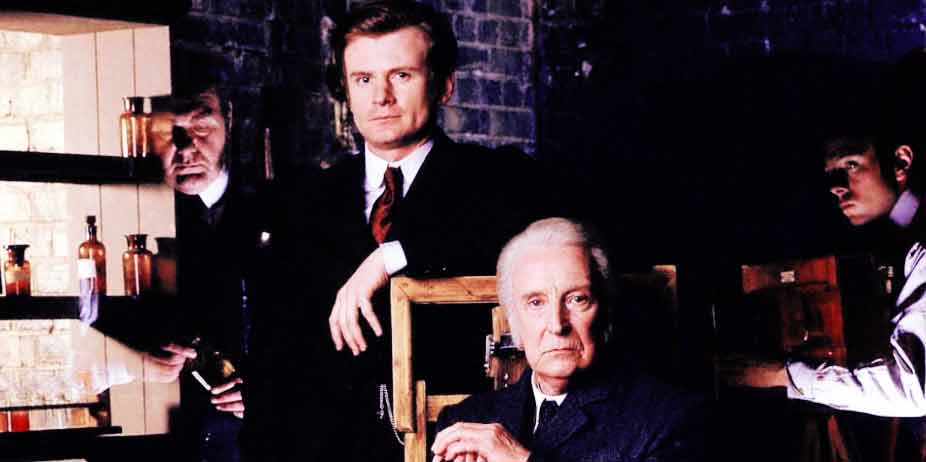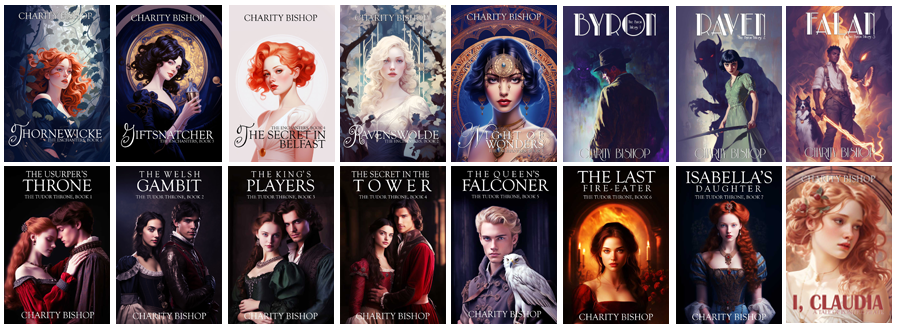
Murder Rooms (2000)
In my long and conclusive study of Sherlock Holmes, I have rarely run across an individual real or imaginary who has yet to compete with him in the ways of medical deduction. That was before my discovery of Dr. Joseph Bell in the BBC series Murder Rooms, known in America as Dr. Bell & Mr. Doyle: The Dark Beginnings of Sherlock Holmes. This drama is fantastically written and superior to American dramas in all of its aspects. It's an example of the very finest British theatre can produce. Best of all, it's primarily based on a true story and its characters are not invented, but literal gentlemen of the Victorian era.
London is up in arms. The famous literary detective Sherlock Holmes has just met his violent end against his evil nemesis at the foot of the treacherous Swiss falls. Strand magazine has been hit with a barrage of complaints throughout the world. The street is crowded with angry protesters, and Arthur Conan Doyle (Robin Laing) is barely able to slip into the editor's offices unattended. Why kill him off? his publisher demands. Surely he might have come up with some more satisfactory conclusion! No, Doyle responds. It was the necessary conclusion. His mind is cast back many years to his first semester at medical school in London. It all began with the violinist on the street corner, a shabby old man whose music was ethereal and haunting, more religious than any of the Jesuit prayers of the Catholic school he'd recently abandoned. When listening to his violin music, Doyle is able to put the concerns of the world behind him.
All is not well at the medical institution. A recent act of Parliament has allowed women into the profession, inciting intolerance and prejudice among much of the student body and a few of the professors themselves. One of the young women struggling for equality is Elspeth Scott (Dolly Wells), determined to live up to her father's great reputation in the medical field. She and the other girls are constantly taunted by the school's religious troublemaker, who calls them harlots, jezebels, and temptresses sent to rob men of their souls. Doyle is unwilling to leap into the midst of this public fray. Instead he finds himself captivated by Dr. Bell (Ian Richardson), the school's most brilliant and eccentric forensics expert. The physician claims that by examination of a single object, he can tell you much of its owner. Skeptical of such methods, Doyle is brought into his confidence when Bell seeks to educate him and installs him into a position as his assistant and clerk.
It is then Doyle learns Bell's singular involvement in the criminal underworld. Not as a member of the rabble which has infiltrated the city, but as one of its defenders. He is often brought in by police influence to investigate into singular crimes. One of them involves a woman suffocated in a locked room. Yet another a mysterious cardboard box with two severed ears inside. As they piece together a chain of events, Bell and Doyle find themselves involved in a deadly adventure involving a mass serial killer and his victims. Traces of arsenic, prostitutes being harmed in the lower districts, a room full of blood... all lead to a horrifying association with Elspeth, whom Doyle has come to respect as a fellow medical student and love as an ardent, faithful young man. Their discoveries will lead to ultimate tragedy and the unveiling of one of the greatest criminal minds of the Victorian age, with a series of misadventures and dark events along the way.
Murder Rooms is no walk in the park, or even a stroll down a pleasant country lane. This is London at its darkest and yet the audience is enthralled with the experience. We walk the shadowy passageways with our eccentric pair of sleuths and find ourselves second-guessing initial suspicions, only to have all our ideals turned upon their head with the final dramatic revelation. Much of the story is based on various historical events, although of course the author (who has successfully launched a series of books based on his screenplays) weaves them together with fiction. A good portion of the story is obviously based on the Jack the Ripper killings, of which Doyle himself had many suspicions. There are also elements of the canon woven into the tale, with references to A Study in Scarlet, The Devil's Foot, The Cardboard Box, and The Sign of Four. With a less capable writer, the story would have come off as a bad attempt to capitalize on a series of successful original stories.
Under David Pirie's capable fingers, they become instead enthralling glimpses into where Doyle might have gathered his story ideas. Dr. Joseph Bell is one of the most fascinating characters to come along in a century, ever since Holmes first appeared in Beeton's Christmas Annual. He is eccentric, methodical, sharp-tongued and utterly brilliant. Ian Richardson's portrayal makes him likeable and yet somehow dangerous at the same time. Like Doyle, we're captivated. There's also much to be said of the supporting cast, which all turn in brilliant performances. Visually this film leans toward gothic horror but is also beautiful to behold, with gas-lit rooms and panoramic shots of the sea. There's very little language aside from mild abuses of deity ("Good God!"), and no actual violence except for a few fistfights. The aftermath of the crimes is much more disturbing. A corpse with bloody stumps where its ears used to be. A room literally dripping in blood. Sheep found slaughtered in the west end, their eyes gouged out. There's a glimpse of a woman throwing up into a basin.
Though there's no actual sexual content, the film does deal heavily with prostitutes. Much conversation exists around the topic of sexually transmitted disease. The wife of a highly esteemed man is suffering from such an affliction, which was passed on by her husband, who often visits brothels. Several prostitutes show varying amounts of cleavage. Doyle goes into one such establishment to gain information and is mistaken for a client. He questions one of the girls as she takes off her shirt to reveal a lacy chemise underneath, but then she sends him on his way. The girls mention their chosen profession and on several times intimate having slept with a client. The police are reluctant to follow the crimes because they involve one of the most established brothels in the city. None of this is overtly intruding or offensive, however I could have done without the nudity. No less than three times we see naked specimens on the operating table, usually from a distance and in rapid shots. Our introduction to Joseph Bell has him beating a naked corpse in the morgue (backside nudity from several different angles). While in class, he whips off the sheet to reveal a naked man face-up (probably a six-second shot, at a distance and with only barely discernable details). Later they exhume a shrunken body and examine it (again, from such a distance it's not obtrusive). Such additions were hardly necessary and overly gratuitous. They tarnish an otherwise first-rate thriller.
The only other thing I might mention is the religious influence. The only churchgoers are religious fanatics, who misquote scripture at female medical students and dispatch a series of crimes out of the Psalms. However, there's also a profound discussion on good and evil and what makes mankind so prone to doing ill when we know we should do good. Not perfect by any means, but to an old lover of murder mysteries such as myself, an intriguing and fascinating way to spend a wintry afternoon.
